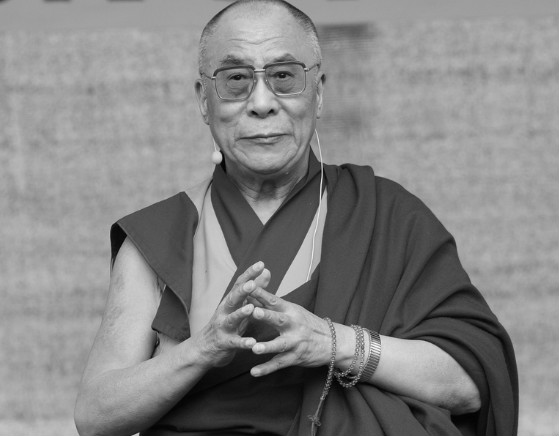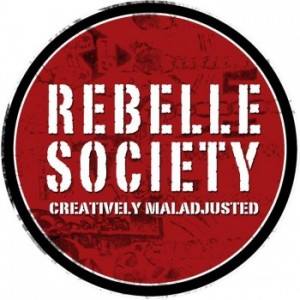Mindfulness in Public Speaking.

{source}
If you are a public speaker — and we all are, because I define public speaking as speaking with anyone other than oneself — I wonder if you practice mindfulness while you speak.
If you do, you are a rare species indeed. Let me explain.
I first encountered mindfulness in 1968 when I began studying aikido and zazen. Mindfulness is basically paying attention to what is happening, as distinct from what you think is happening. This is a very useful skill in the dojo, so as to not get your bones broken during an aikido training session. Be present, or get hurt.
I followed up this introduction to mindfulness in another way, during a month-long Vipassana retreat, in Madras, India, led by the renowned Burmese teacher Satya Narayan Goenka. The retreat was a 24/7 hell of paying attention to one’s breath and to every movement within one’s mind and body. We were discouraged from sleeping more than a couple hours a night. Are you kidding me?
I managed to stick it out for the whole month, but I couldn’t get away fast enough. Then, barely a few weeks after surviving the hell of Goenka’s retreat, I walked into the ashram of one Swami Muktananda, a meditation master and living embodiment of mindfulness, of present-centered awareness. I ended up living with him for 11 years!
I left Muktananda’s ashram in January 1985, but by then the practice of mindfulness had become my life.
Mindfulness refers to our capacity to see, understand, and relate to what is actually happening, rather than what we think is happening. Essentially, the more mindful and aware we are, the more real and authentic we can be.
How does this connect to our speaking? You’ll agree that every time we speak, we produce an effect in the minds and hearts of our listeners, our audience. They will think and feel something, and maybe even be inspired to do something, all as a result of our speaking. These are the effects we produce every time we speak.
Now, I ask you: do you produce conscious, intentional, purposeful effects when you speak, or do you produce random, what-the-hell-did-I-just-say, hope-for-the-best effects?
Mindfulness in public speaking refers to our capacity to produce conscious, intentional, purposeful effects when we speak. So, how do we do that?
I had always been a good, effective speaker, though I was an unconscious competent. That is, I was not consciously aware of how and why I was a confident, competent, often inspirational, speaker. One day, I decided to become a consciously competent speaker, so I could help others become more authentic, effective speakers. I deconstructed my style of speaking.
I looked closely and carefully at how I spoke. I made a few pages of notes.
From that beginning was born Speaking Truthfully, the work I have done for the past 12 years. My approach to public speaking is unique, precisely because of my lifelong cultivation of mindfulness. I discovered that my prowess in speaking was largely due to the fact that I melded mindfulness with speaking in real time.
I realized that most people are completely unconscious when they speak. They do not have conscious awareness of what they say and how they say it while they are speaking. Of course not, we’ve never learned how.
Yes, we all have acquired language and learned how to use it in a rudimentary fashion. But we’ve never learned the science, art, and skill of authentic public speaking the way I do it and the way I teach it.
What do we have to work with? Two things: what we say, and how we say it. What we say is called content, our message, the words and perhaps images we use to communicate information and our points of view. I’ll leave that alone for now, as that is in itself another article.
Information is important, yes. However, information is giving out; communication is getting through. Often, it is how we say what we say that gets through.
What, then, are the various elements we have at our disposal to use in a mindful way? We have our inner state of being; our psychological, emotional, and spiritual dimensions. Are we speaking our truth and showing others who we are? Does our presence alone, in and of itself, say something important? Are we spewing ideas and beliefs that do not reflect our inner truth, our heart, our authentic self?
Are we suppressing our emotions so as to appear, well, emotionless? Are we selling some fabricated persona that we think might make a good impression?
The speaking instrument also comprises our actual physical body and the many ways we can use it mindfully to support our speaking. We have our posture, our gestures, our facial expressions. We have our movement on a stage, or in front of a room. We have the strength with which we say our words, the volume and degree of projection. We have the rate and pace of our words. We have pauses and silence.
We have a light in our eyes. We have our smile and laughter. We have our softness and tears. We have our shakti, our life force.
We have the degree of our connection, to both our own self and to our audience. Are we hiding and pretending, or do we show up fully transparent and vulnerable? Do we make natural, sustained eye contact with people, so as to facilitate human connection? Are we speaking with confidence and self-assuredness, or are we speaking timidly, undercutting our credibility with self-doubt?
And, where are we speaking from? From a rehearsed, prepared script that lives in our mind, or from a deeper and truer place within us? Are we simply venting or ranting, or are we speaking with awareness of each word as they arise from our creative source and center?
These are some of the many elements a truly conscious, mindful speaker uses to produce conscious, intentional, purposeful effects. And the mindful use of our speaking instrument is also a means for us to tell the truth of who we are, to live authentically and fearlessly, to fill the space in which we are speaking with the depth and beauty of who we are, not who we think we should be or who others want us to be.
Bottom line? Mindfulness in public speaking requires that we show up, plant our feet on the ground, look people in the eyes, and tell the truth. No hiding, posturing, pretending. No deception, half-truths, or statements we don’t believe. If we speak truthfully and mindfully, people will listen. Our life will glow. Our work will thrive. Our heart will sing. Our spirit will soar. We will be a blessing to ourselves and to others.
***
Robert Rabbin began his professional journey in 1985, after spending 10 years living and working with meditation master Swami Muktananda. Since then, he has developed an international reputation as a radically brilliant speaker and public speaking guru, as well as a distinguished self-awareness facilitator, leadership adviser, and personal mentor. Robert is the creative source and director of Speaking Truthfully, through which he offers masterclasses and private mentoring in authentic self-expression and public speaking. He has published eight books and more than 200 articles on authentic living and public speaking, leadership, self-inquiry, spiritual activism, and meditation. In January 2012, he was diagnosed with Stage 4 lung cancer, and was told he had a few months to live. However, in keeping with his contrarian nature, he continues to thrive past the predicted use-by date. He lives in Los Angeles, and can be contacted via his website.
***
{Join us on Facebook, Twitter, Instagram & Pinterest}

